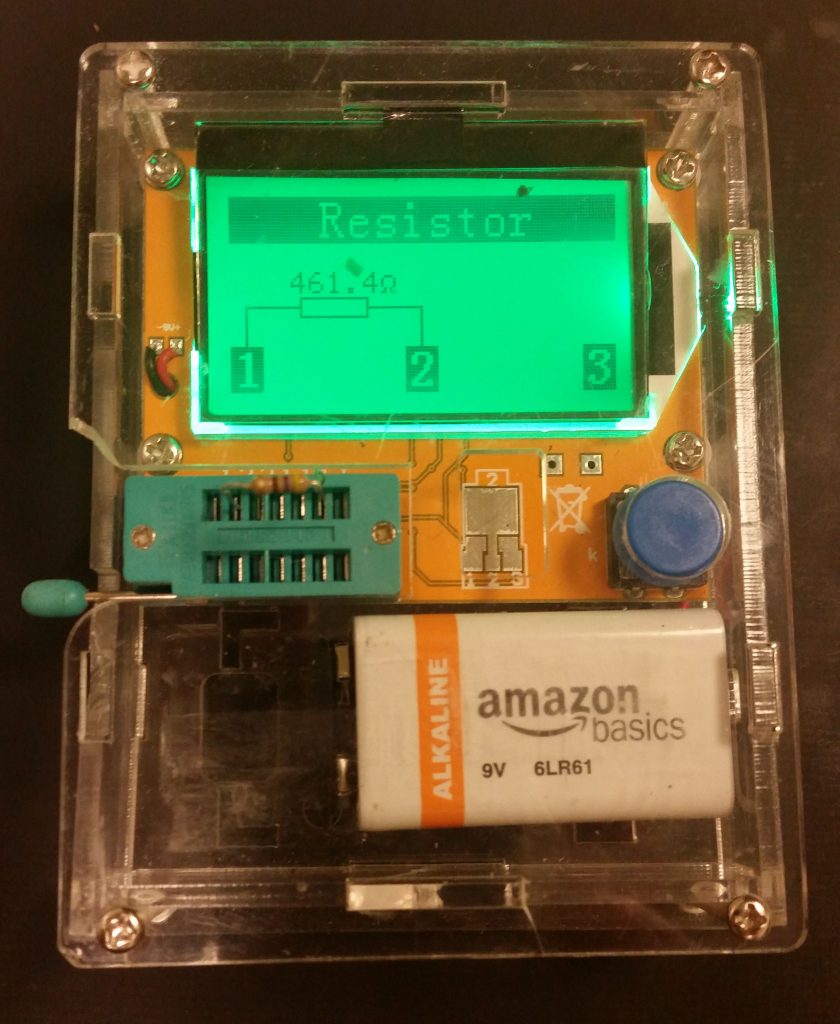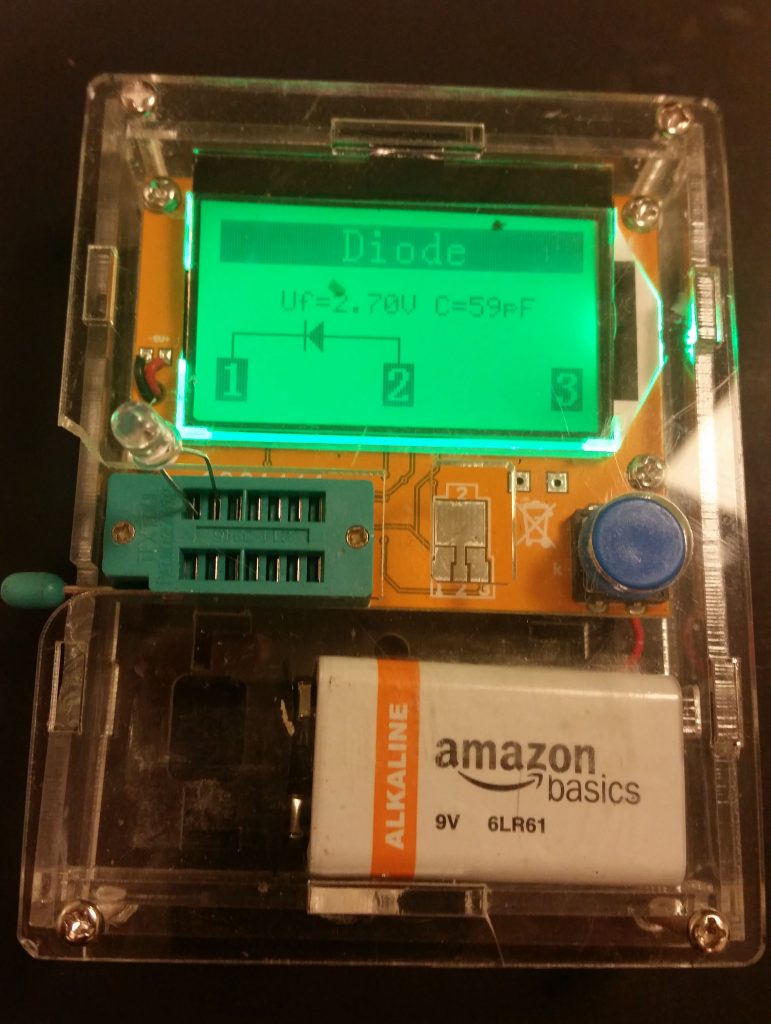The microcontroller revolution has accelerated the development of tools available to the electronics industry. Multimeters (recently, DMMs) and oscilloscopes (recently, DSOs) have been a staple of electronics workbenches for decades, along with signal generators, frequency counters, and other specialized tools.
All of these tools, however, have generally been made to make measurements of basic quantities — voltage, current, frequency, or perhaps subtler measurements like capacitance or even complex impedance, in the case of LCR meters. The intelligence has always been, ostensibly, with the operator.

Definitely not your father’s multimeter. (His required some skill to use!)
Tools like automated component testers are starting to change that. Instead of having to know what a particular component is and find the right instrument or come up with a test procedure, these devices help play detective for you. Connect a mystery component across two or three terminals, lower the latch, press the big blue button that is literally the only control on the unit, and it (usually) tells you what the component is, which terminal is which (if it matters), and even the specs.
For $15 or so, it would be a cool little device if it just did resistors; this kind of form factor can be convenient. But so far, I’ve seen it identify not only resistors, but diodes, FET and BJT transistors, capacitors, inductors, and (unreliably) combinations of two or more of the above, such as diode-plus-resistor combinations.
For components like diodes, it will give a good estimate of the forward voltage drop as well as the capacitance, which is easy to forget about until you wonder why your LED is acting like a capacitor.

(as well as which terminal is which — useful on some of the weird ones!)
…and knowing modern tech, there’s a good chance that it started life as an Arduino project.

